Kalanchoe pinnata, also named Bryophyllum, belongs to a family called Crassulaceae. It is known for its ability to grow new plants from the ends of its leaves, making it a popular choice for indoor gardening. It is native to regions across Asia, Europe, North, South, Central America, Africa, and the Caribbean. However, the Kalanchoe genus is highly variable regarding growth rate, chemical composition, stems, leaves, and flower color. This diversity contributes to its adaptability to different environments and climates. The plant is known for its easy pollination process.
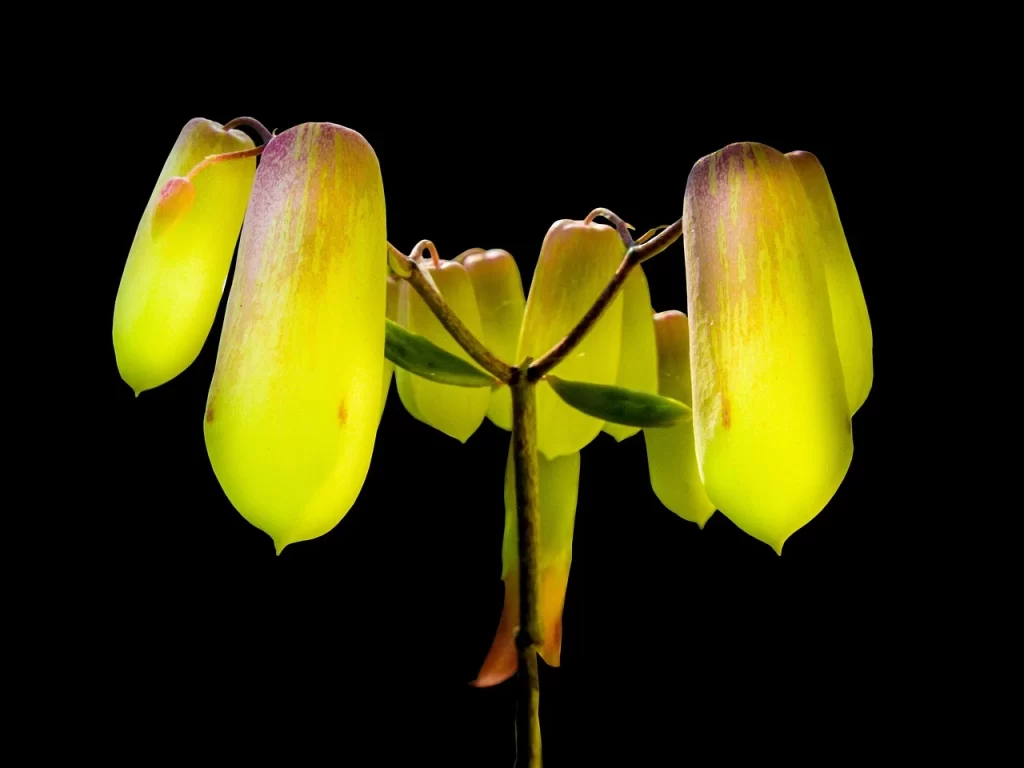
Kalanchoe genus varies by various names depending on the geographical location. Its popularity in traditional medicine has made it an essential ingredient in many remedies. The plant’s widespread distribution and varied characteristics make it a botanical study and research.
Kalanchoe pinnata Plant Botanical Overview
Kalanchoe pinnata is an herbaceous plant with variable size, typically ranging from 30 to 120 cm (approximately 0.3 to 1.2 meters) in height but occasionally reaching up to 2 m. The stem is upright, fleshy, and no hair. The succulent leaves can be simple, especially in seedlings or compounds, exhibiting a pinnate structure.
The plant produces flowers that can be either green or yellow. Analyses of Kalanchoe species have revealed that it contains alkaloids, glycosides, steroids, and phenolic compounds. However, these chemical constituents contribute to the plant’s pharmacological properties, including anti-allergic, anti-bacterial, insecticidal properties, antioxidant, and other therapeutic effects[1]Kumar Biswas S, et al., A review of the traditional medicinal uses of Kalanchoe pinnata (Crassulaceae), Vol. 10 (1), pp. 001-005, 2021. Read.
Read: Kalanchoe Blossfeldiana – Propagation, Care, and Toxicity
Kalanchoe pinnata Growth Behaviour
The stems of Kalanchoe pinnata are succulent, fleshy, and hairless. It has succulent leaves with a flashy appearance; they are either pinnate or trifoliate, depending on their structure. A leaf can have as many as 25 leaflets and is oppositely arranged, ranging in size from 5 to 25 cm in length and 2 to 12.5 cm in diameter. A hairless (glabrous) surface covers the leaves, which vary in color from green to yellowish-green. The stalks are 2 to 10 cm long.
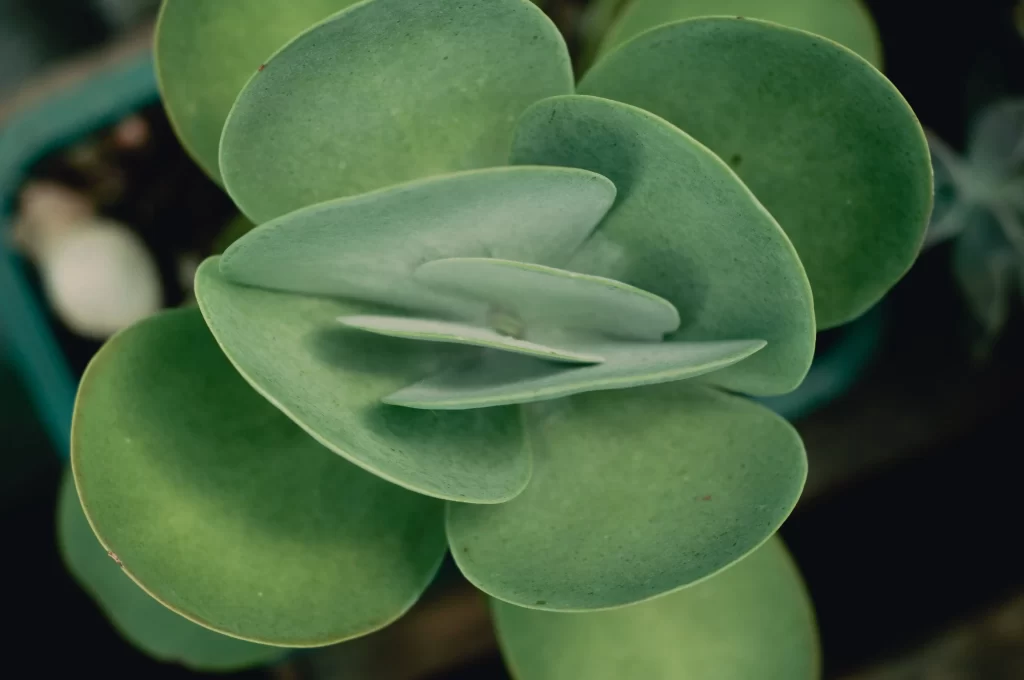
Kalanchoe pinnata Leaf, Flower and Fruit Structure and Bark Characteristics
Leaf Characteristics And Arrangement
Kalanchoe pinnata leaflets are oval to elliptical. When leaves detach from stems, miniature plantlets can form. As stems mature, they become reddish-speckled and obtusely four-angled.
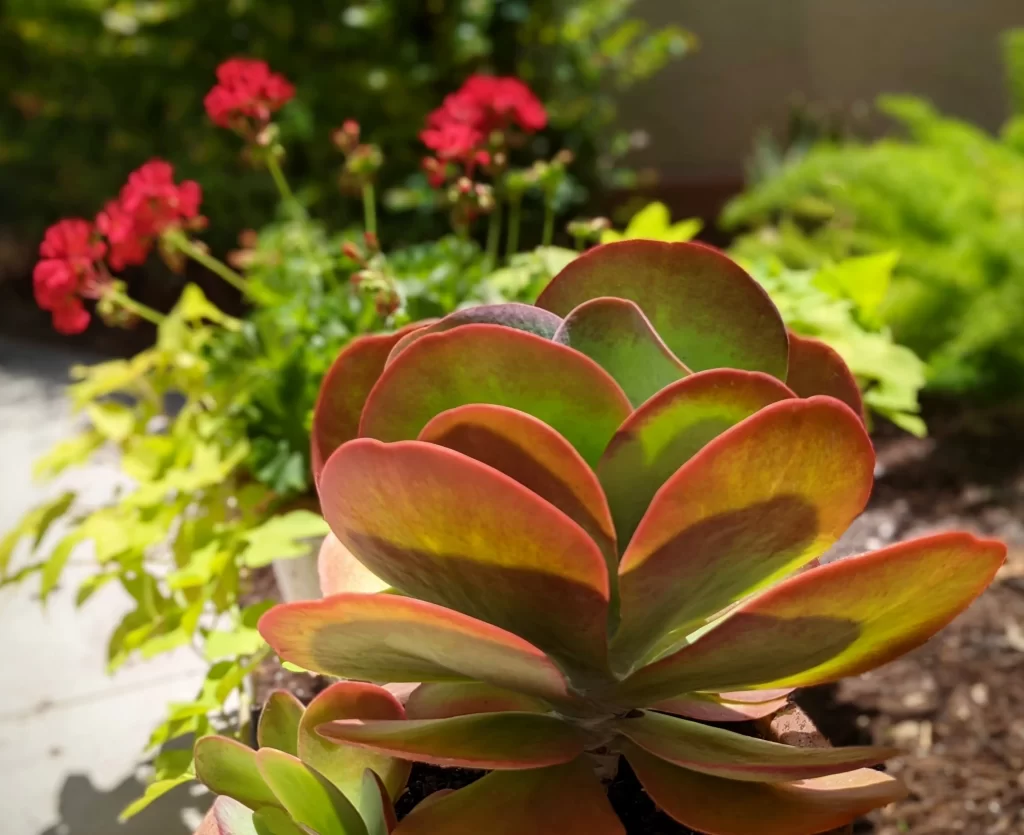
The Notable Features of Leaves
A notable feature is the ability of the leaves to produce buds at the extremities of the lateral nerves, containing roots, leaves, and stems. After falling off, these buds can immediately grow into new plants. The flowers are reddish-purple and hang down, arranged in large spreading panicles with opposite stout branches. The calyx is red and green at the base, striated pale green above. The filaments are green at the base, pinkish below the anther, and the anther is hasty and black. The fruits enclose in the persistent papery calyx and corolla.
Flowering Features
Approximately 7 cm long bell-shaped flowers hang from the plant. During spring and winter, flowers bloom in branched clusters from the terminal inflorescence of K. pinnata.
Fruit and Seed Structure
The fruit is papery and membranous, enclosing four cylindrical carpels that contain numerous brown seeds.
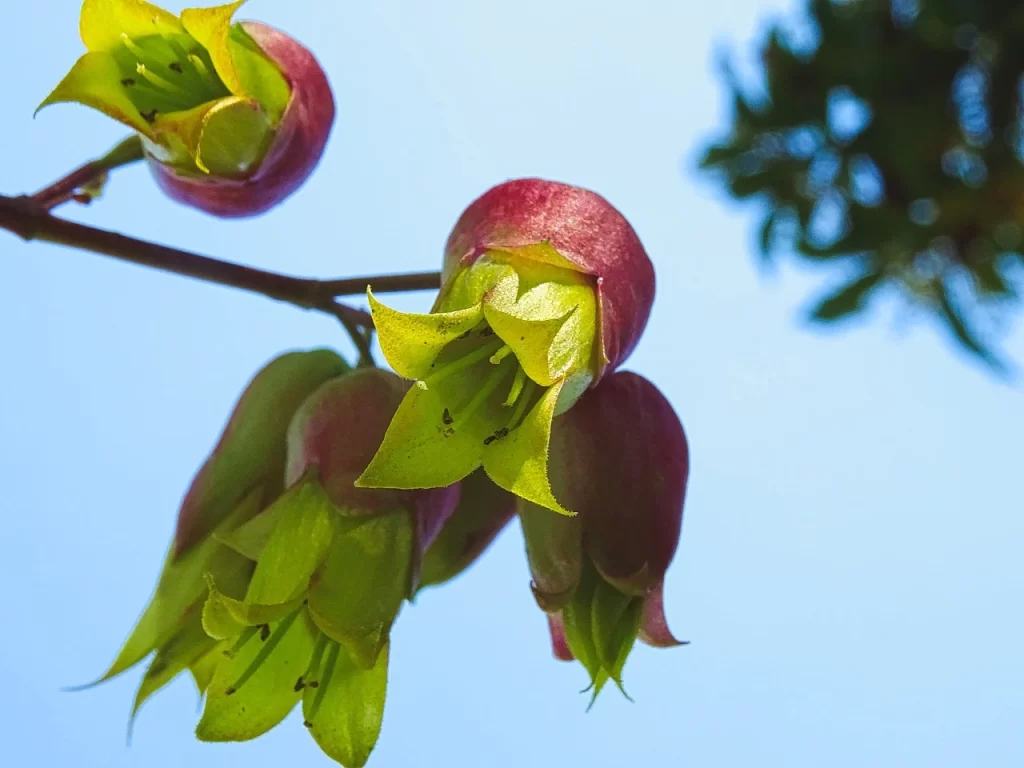
Kalanchoe pinnata Plant Bark
Despite being bitter, the leaves and bark of Kalanchoe are utilized for their medicinal properties. Additionally, the plant is known for its astringent effects on the bowels.
Kalanchoe pinnata Aroma
Kalanchoe pinnata is an aromatic herb known for its sweet and sour fragrance. The plant is described based on its taste, with the variety having a green color and reaching a height of 1-1.5 meters. The oils in the leaves and other parts of various Kalanchoe species and cultivars contribute to their distinctive aroma.
Pharmacological Effects
These pharmacological activities of Kalanchoe consider wound healing, antioxidant protection against oxidative stress, and managing diabetes and associated cardiovascular risks[2]Aejazuddin et al., The miracle plant (Kalanchoe pinnata): A phytochemical and pharmacological review, IJRAP, 2, 2011. Read. The pharmacological effects of Kalanchoe pinnata are diverse and include the following:
Wound-healing Activity
The ethanolic extract of Kalanchoe pinnata is utilized for wound-healing activity. Moreover, this is evidenced by a reduced size of the affected area and decreased swelling at the wounded site.
Antioxidant Activity
Among its antioxidant properties, Kalanchoe inhibits free radicals. Antioxidants, including reductones found in the plant, can break the free radical chain by donating hydrogen atoms or electrons. However, this antioxidative property is beneficial in preventing cellular damage and is associated with potential treatments for cardiovascular disorders.
Antidiabetic Activity
The plant may be able to address diabetes, a significant risk factor for heart attacks and strokes. Upon examination, the ethanolic extract of Kalanchoe has been found to decrease blood glucose levels in diabetic rats. Also, the extract enhances pancreatic secretion of insulin, which is crucial in managing diabetes.
Kalanchoe pinnata Propagation
There are no complicated methods for propagating Kalanchoe pinnata; it is usually done using its unique plantlets that form along the margins of its leaves. Detach and place these plantlets using a well-draining potting mix or direct planting in soil. Until roots develop, ensure the ground remains moist and water them moderately once they are established. However, Kalanchoe pinnata’s natural ability to produce plantlets makes it an affordable plant to propagate and multiply their collection.
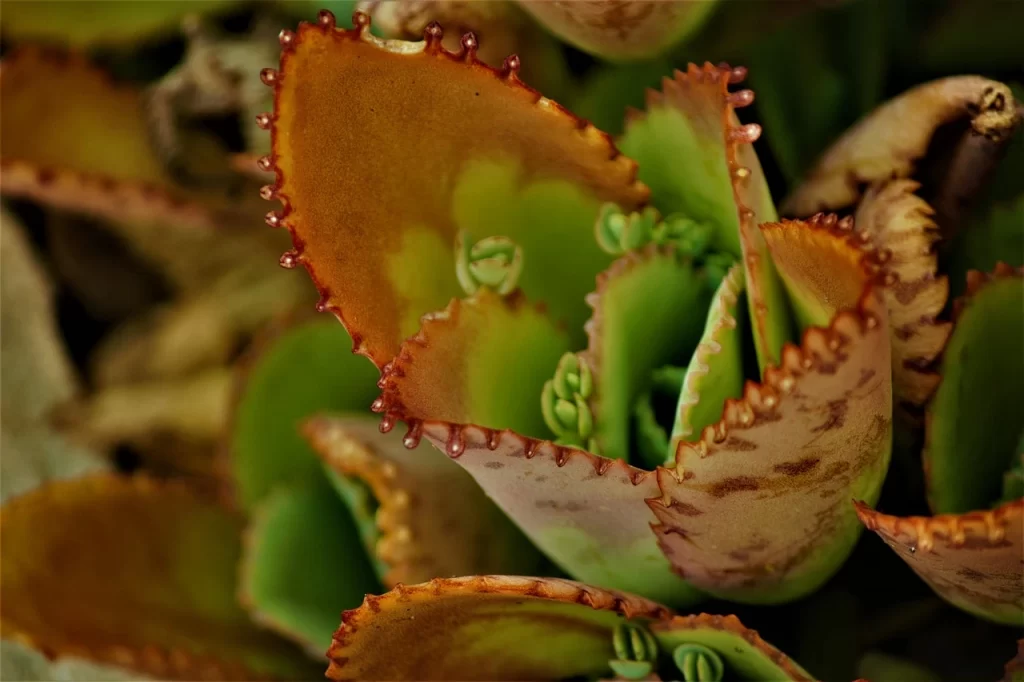
Read: Kalanchoe Daigremontiana (Mother of Thousands)
Conclusion
Kalanchoe Crassulaceae family plant found in tropical and temperate regions, exhibits diverse pharmacological activities traditionally used to treat various diseases. This article has demonstrated all the botanical information about the Kalanchoe pinnate Plant and its significant importance in botanical and pharmacological research subjects.



